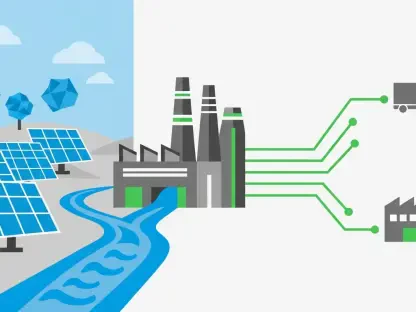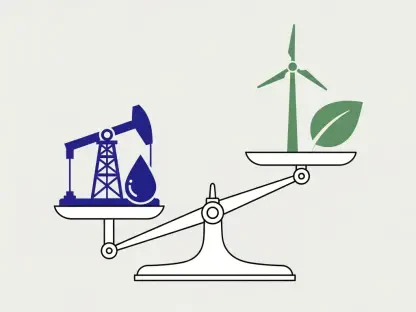Singapore is taking a significant step towards a sustainable future with the introduction of its first district-level Smart Grid in the Punggol Digital District (PDD). This innovative project, led by Jurong Town Corporation (JTC) in collaboration with Univers and PacificLight Power, aims to transform energy management and efficiency in the region. The Smart Grid is a cornerstone of Singapore’s ambitious plan to achieve net-zero emissions by 2045.
The Vision Behind the Smart Grid
A Strategic Move for Energy Efficiency
The Smart Grid project is a strategic initiative designed to enhance energy efficiency and reduce emissions. Unlike traditional grids, which operate on a one-way delivery system, the Smart Grid employs two-way communication. This allows for dynamic adjustments in power distribution based on real-time supply and demand data. The result is a more efficient use of energy that minimizes waste and brings significant cost reductions. This level of efficiency is crucial for a densely populated and economically vibrant area like PDD, where energy demand can fluctuate substantially throughout the day.
The project’s strategic significance is further underscored by its timing and placement within the Punggol Digital District, an area known for its innovative technological landscape. With the backing of JTC, a statutory board under Singapore’s Ministry of Trade and Industry, this initiative is set to become a model for modern energy management systems. Collaborative oversight from the Energy Market Authority (EMA) and the Public Sector Science & Technology Policy & Plans Office (S&TPPO) under the Prime Minister’s Office highlights the national importance of the Smart Grid. By implementing advanced technologies and strategic planning, Singapore is making a bold statement in its commitment to a sustainable future.
Integration with Renewable Energy
One of the most notable features of the Smart Grid is its integration with renewable energy sources, particularly solar panels. Renewable energy can be inconsistent due to varying weather conditions, but the Smart Grid’s dynamic management capabilities help stabilize the grid. By balancing power supply, the Smart Grid ensures reliability and stability, supporting clean energy objectives and reducing the need for costly new power infrastructure. This integration aligns perfectly with Singapore’s broader green energy goals and mandates for a cleaner environment.
The Punggol Digital District Smart Grid includes a comprehensive installation of solar panels, which collectively generate over 3,000 megawatt-hours of clean energy annually. This substantial capacity underscores the system’s design to maximize renewable energy generation. Furthermore, integrating renewable energy with an advanced grid system allows for a more harmonious and efficient energy ecosystem. Companies and residents within PDD will benefit from reduced energy costs and a decreased carbon footprint, making the district a model for other regions to follow.
Technological Innovations and Capabilities
Advanced Monitoring and Management
At the core of the Smart Grid’s functionality is its ability to use digital means to monitor and manage electricity flow effectively. This advanced technology facilitates efficient energy usage and minimizes waste. By employing real-time data, the Smart Grid can dynamically adjust the distribution of electricity, matching supply with demand precisely. This level of control is particularly important in an environment where energy usage can vary widely based on numerous factors, including weather conditions, time of day, and the specific activities of district occupants.
The Smart Grid’s demand response capabilities also enable district occupants to engage in energy-saving practices by adjusting their consumption behavior based on time-based rates. During peak periods, when charges are higher, consumers are incentivized to reduce their energy usage, contributing to overall energy efficiency. This not only fosters a culture of energy consciousness but also plays a significant role in reducing the district’s overall energy demands. The combination of these technological innovations ensures that the PDD Smart Grid is at the forefront of modern energy management systems.
Artificial Intelligence and Machine Learning
The Smart Grid project also leverages artificial intelligence (AI) and machine learning models to optimize energy use across the district. These technologies are expected to enhance energy efficiency by over 50%, exceeding the stringent Green Mark Platinum standard. AI and machine learning models analyze vast amounts of data in real-time to predict energy consumption patterns and make immediate adjustments. This results in a more balanced and efficient energy grid that can adapt to changing conditions with minimal human intervention.
JTC and its partners anticipate achieving an additional 20% energy savings through these advanced models. By utilizing AI and machine learning, the Smart Grid can implement predictive maintenance, dynamic pricing, and automated load balancing. These capabilities not only enhance the performance of the grid but also contribute to a substantial reduction in operational costs. The successful integration of these technologies underscores the innovative and forward-looking nature of the PDD Smart Grid, setting a new standard for energy management and sustainability initiatives.
Collaborative Efforts and Future Implications
Partnerships and Oversight
The implementation of the Smart Grid at PDD enjoys collaborative oversight from the Energy Market Authority (EMA) and the Public Sector Science & Technology Policy & Plans Office (S&TPPO) under the Prime Minister’s Office. This collaboration underscores the project’s importance and the collective effort to transition to green energy. Michael Ding, Global Executive Director at Univers, and Nelson Liew, Group Director of New Estates at JTC, highlight the transformative potential of this collaboration in aiding PDD businesses in their energy efficiency and decarbonization efforts.
These partnerships ensure that the Smart Grid project is not just an isolated initiative but a part of a broader strategy to modernize Singapore’s energy infrastructure. Collaborative efforts among various public and private stakeholders are crucial for the project’s long-term success. Moreover, the involvement of high-profile organizations lends credibility and resources that can help overcome potential challenges. Through these partnerships, the Smart Grid project at PDD is well-positioned to serve as a template for similar initiatives, both domestically and internationally.
A Living Laboratory for Innovation
PDD serves as a living laboratory where companies can test innovative solutions in an operational setting. The Smart Grid not only generates, transmits, and stores energy efficiently but also provides a platform for advancing sustainability goals. This real-world application of smart grid technology demonstrates its potential to revolutionize energy use and management. Companies operating within PDD can experiment with cutting-edge technologies and methodologies without the risks typically associated with large-scale implementation.
This innovative ecosystem fosters a collaborative spirit among businesses, researchers, and policymakers, making PDD a hub for technological advancement. The Smart Grid’s success in PDD could lead to broader applications, transforming how energy is managed across different sectors. The living laboratory model facilitates continuous learning and adaptation, ensuring that the Smart Grid remains on the cutting edge of technology and sustainability. This approach not only benefits the businesses within PDD but also contributes to Singapore’s overarching goals of innovation and sustainability.
Broader Implications for Singapore
Extending the Smart Grid Model
While initially applied in a business district, the Smart Grid model has the potential to be extended to local neighborhoods. By combining renewable energy with real-time monitoring, energy efficiency in domestic settings can be significantly enhanced. Low Xin Wei, Assistant Chief Executive of EMA’s Markets and Systems Division, reflects on PDD’s mix of commercial and educational facilities as a microcosm that demonstrates how such smart grid management capabilities can scale island-wide. The extension of the Smart Grid model to residential areas could lead to significant energy savings and more sustainable living environments.
As the Smart Grid technology proves successful within PDD, it sets a precedent for broader adoption across Singapore. The integration of renewable energy sources, real-time data analytics, and advanced management systems can revolutionize how energy is consumed and managed at all levels. The potential for household applications means that everyday citizens can actively participate in the country’s green energy initiatives. By creating a more efficient and sustainable energy ecosystem, Singapore is not only improving its environmental footprint but also setting a global example for innovative energy solutions.
Achieving Net-Zero Emissions
Singapore is making a major leap towards a sustainable future by unveiling its first district-level Smart Grid in Punggol Digital District (PDD). This cutting-edge initiative is spearheaded by Jurong Town Corporation (JTC) in collaboration with tech companies Univers and PacificLight Power. The goal of this project is to revolutionize how energy is managed and used in the area, ultimately boosting efficiency and sustainability.
The Smart Grid is a pivotal element in Singapore’s bold strategy to reach net-zero emissions by 2045. This advanced system will harness real-time data to optimize energy distribution, minimize wastage, and integrate renewable energy sources more effectively. By doing so, it promises to create a more resilient and adaptive energy infrastructure.
In addition to environmental benefits, the implementation of the Smart Grid in PDD is expected to provide economic advantages, such as lower operational costs and enhanced energy security. This project sets a precedent for future sustainable developments in Singapore and serves as a model for other cities worldwide aiming to transition to greener energy systems.









